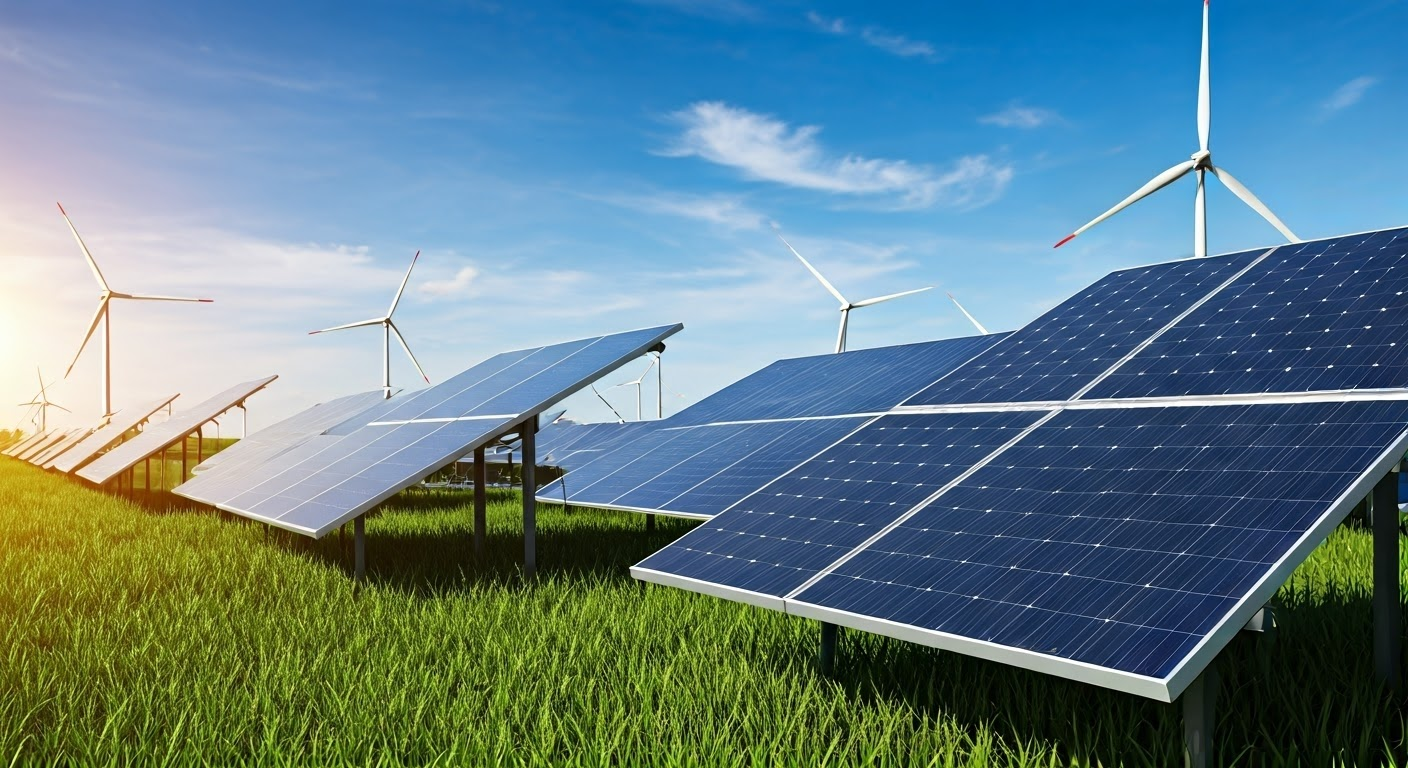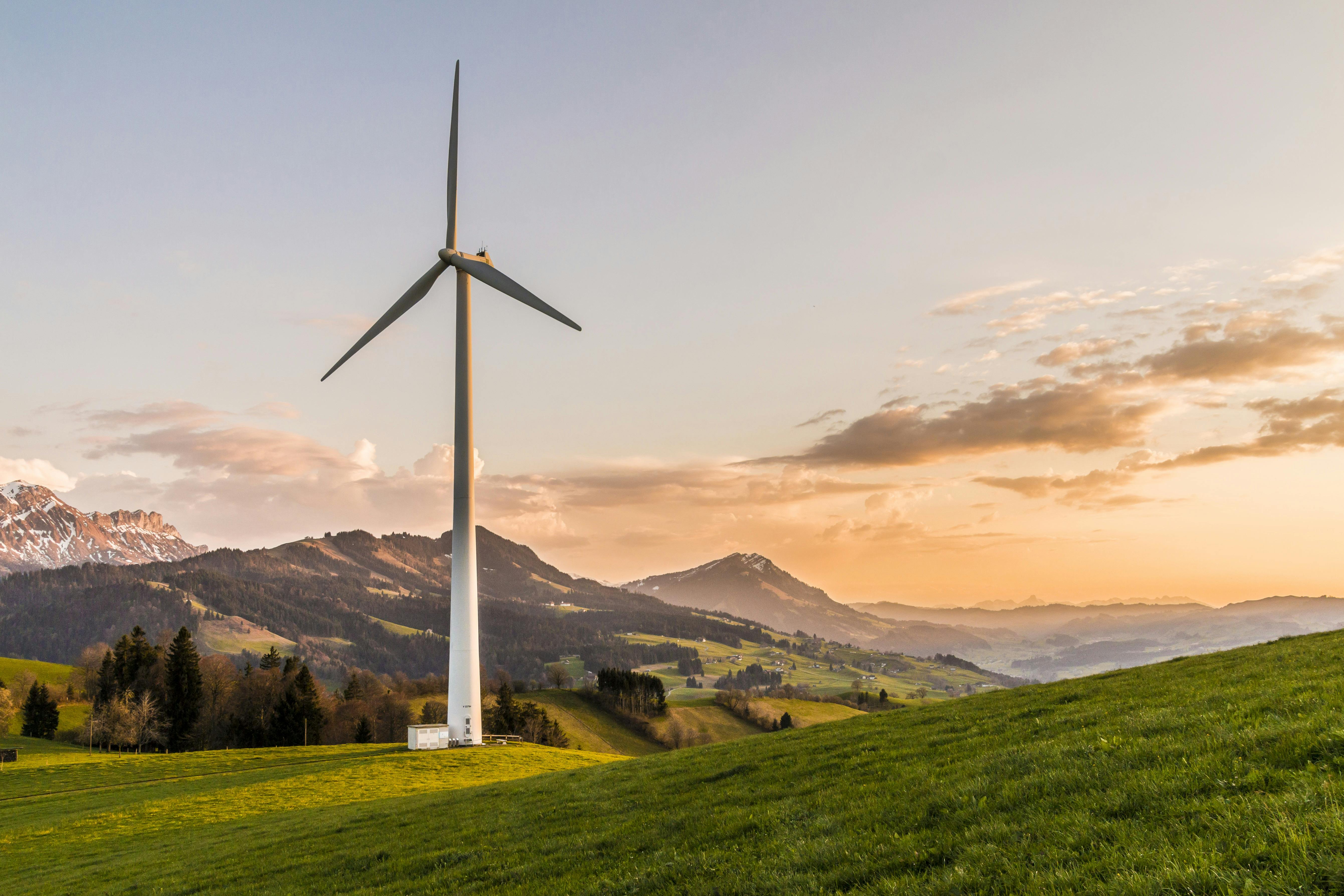Key Highlights
- Microgrids are self-contained energy systems: They can operate independently or in conjunction with the main power grid, providing enhanced resilience during outages.
- Renewable integration is seamless: Microgrids can seamlessly incorporate solar panels, wind turbines, and other renewable energy sources, promoting sustainability.
- Enhanced energy independence: Communities and facilities gain greater control over their energy production and consumption, reducing reliance on external sources.
- Resilience against disruptions: Microgrids offer a buffer against power outages caused by extreme weather events or grid failures, ensuring a more reliable energy supply.
- Reduced carbon footprint: By utilizing renewable energy and improving energy efficiency, microgrids contribute to a cleaner and more sustainable energy future.
Introduction
The global energy landscape is changing a lot. This change comes from more people using renewable energy sources. There is also a need for energy systems that are strong and sustainable. Old centralized power grids have many problems. These include being at risk of outages and having trouble using renewable energy. To address these issues, a new way is developing: energy decentralization, which empowers communities to take control of their energy production with microgrids. This new method could change how we produce, share, and use energy.
The Shift Towards Energy Decentralization
For more than one hundred years, centralized power plants and large transmission networks have led electricity making and sharing. But now, this way is facing problems. We need to change to clean energy, and we also want a stronger energy system that can accommodate excess energy. This need is driving a move towards energy decentralization. This change means moving from central systems to smaller, local ones, with microgrids leading the way.
Understanding the Move from Centralized to Decentralized Networks
Centralized networks have been the main part of our energy system. They rely on big power plants and long transmission lines. But this model has some problems. Centralized grids can go down easily during events such as natural disasters or cyberattacks. It is also hard to add renewable energy sources to these grids.
Decentralized networks provide a better option. They are more flexible and stronger against issues. These systems generate and store energy closer to consumers. This setup reduces transmission losses and makes the system more reliable. They can also include different energy resources easily, especially renewables. This helps create a cleaner and more sustainable energy mix.
The Role of Microgrids in Energy Decentralization
Microgrids are important for energy decentralization. They are self-sufficient energy systems that can run on their own or with the main power grid. This allows for a local way to create and share energy. Microgrids usually include:
- Local Energy Resources: These can be natural gas, combined heat and power systems (CHP), and renewable sources like solar panels and wind turbines.
- Energy Storage: Batteries help balance energy supply and demand. This is especially needed when using wind and solar energy, which can vary.
- Advanced Control Systems: These systems manage energy use inside the microgrid. They help make the system more efficient and reliable.
By using these parts, microgrids help local communities and facilities become more energy independent. They also reduce their carbon footprint and become better at handling power outages.
Key Components of a Microgrid

Understanding the main parts of a microgrid is important to know how it works and why it matters. A microgrid combines local energy resources, energy storage, and advanced control systems. This creates an energy system that can operate alone or connect to the larger grid. It is designed to meet the specific needs of a community or facility. This mix helps manage energy better, improves reliability, and allows for easy use of renewable energy sources.
Renewable Energy Sources: Solar, Wind, and Hydrogen
Renewable energy sources play a key role in microgrid systems. They help us shift away from fossil fuels and move towards cleaner energy. Solar panels turn sunlight straight into electricity. This gives us a clean and plentiful energy source. Wind power is another renewable option. It is collected through wind turbines, especially in places where the wind blows consistently. Hydrogen fuel cells are a new technology for microgrids. They can change hydrogen gas into electricity, creating only water as waste. By using these renewable sources, microgrids can reduce their carbon footprint. They provide a sustainable and local choice compared to traditional power generation.
The Technology Behind Microgrid Operations
Sophisticated technology supports how a microgrid works and is managed. Energy storage systems, usually advanced batteries, are important in balancing energy supply and demand. They store energy when the demand is low or when renewable sources produce a lot. Then, they release this energy when demand goes up or when renewable generation decreases. Smart grid technology helps make microgrids more efficient and dependable. Sensors and smart controls check energy flows, voltage levels, and grid stability in real time. They automatically adjust energy distribution and resource use for the best performance. This smart energy management system keeps the microgrid running smoothly, safely, and reliably. It helps make the most of renewable energy sources.
Advantages of Microgrids in Modern Energy Systems

The benefits of microgrids go beyond just making and sharing electricity. They can work alone and are strong against problems. They can also use renewable energy sources well. This move to cleaner and local energy options is very helpful. It adds to our energy safety and lessens harm to the environment.
Enhancing Energy Independence and Security
Microgrids help communities and facilities become more independent and secure with their energy needs. They make power on site, which cuts down the need for the main power grid. This is important because the main grid can be weak during tough times. If there are power outages from things like natural disasters or problems with the grid, microgrids can work by themselves. They can separate from the main grid and keep running. This helps provide a reliable power supply for important services like hospitals and emergency services. In this way, microgrids make communities stronger and safer.
Reducing Carbon Footprint and Promoting Sustainability
Microgrids are designed to support sustainability. They help lower the carbon footprint for the communities or places they serve. By using renewable energy sources like solar panels, wind power, battery energy storage, and fuel cells, microgrids reduce the need for fossil fuels. This change helps cut down on greenhouse gas emissions and creates a cleaner energy future. Additionally, microgrids often use energy efficiency measures. This helps lower energy use and reduces the impact on our environment.
Mitigating Energy Price Volatility through Localized Production
Microgrids can help protect against sudden changes in energy prices. These prices often go up and down due to world fuel markets and political events. By making electricity close to where it is used, microgrids lower the need to rely on the main power grid. This helps to avoid price swings. With this local way of producing electricity, microgrids can provide price stability and lead to good cost savings for those who run them and the people who use their power. Plus, some microgrids in the global microgrid market can give extra energy back to the main grid, which can also bring more financial benefits.
Challenges in Implementing Microgrid Technologies
Microgrids have many benefits, but there are also some problems that can stop them from being more widely used. These problems include money issues, technical difficulties, and dealing with complicated rules. It is important to solve these problems to fully use microgrids in changing the energy sector.
Overcoming Initial Capital Costs and Financial Hurdles
One main reason that stops many places from using microgrids is the high cost to set them up at first. Even though they can save money on operations in the long run and may create income, getting the money needed for the start can be hard. Big projects often need new ways to finance, like teaming up with public and private businesses or looking for grants. Also, communities or businesses should closely check if a microgrid project is worth it. They need to think about energy use, the resources they have, and any incentives that could help. This is important for cost savings.
Addressing Technical and Regulatory Barriers
Technical challenges and rules can make it harder to use microgrid technologies smoothly. It is important to ensure that parts of microgrids from different makers can work together well. We also need to create industry standards. On top of that, dealing with the complicated rules around power generation, interconnection agreements, and how the grid works needs clear and helpful policies. To support the growth of microgrids, we need to make the permitting steps easier. Setting up strong rules that encourage microgrid development is key to helping them be used more widely.
Conclusion
In conclusion, microgrids are changing how we produce energy. They help us become more independent and secure with our energy use. By using renewable sources like solar and wind, microgrids lower our carbon footprint and produce energy locally. This also helps keep energy prices stable. There are challenges to using microgrids, like high starting costs and rules that we must follow, but they are important for the future of energy. If you want to learn more about microgrids and their effect on today’s energy systems, check out our next blog for a full look at this important technology.
Frequently Asked Questions
What Makes Microgrids an Essential Part of the Future of Energy?
Microgrids are important for a strong energy future. They provide energy independence and help keep the grid stable. They also make it easier to use renewable energy sources. The market for microgrids is growing bigger, showing how vital they are in solving today’s energy problems.
How Do Microgrids Contribute to Environmental Sustainability?
Microgrids help the environment by allowing the use of renewable energy sources, such as solar and wind power. Moving away from fossil fuels lowers carbon emissions. This change helps create a cleaner energy system.
What Are the Main Challenges Faced by Microgrid Adoption in the United States?
Microgrid use in the United States has some challenges. These include high starting costs, the need for clear rules, and complicated agreements for connecting to the grid. To make microgrids widely used, it is important to overcome these problems.

